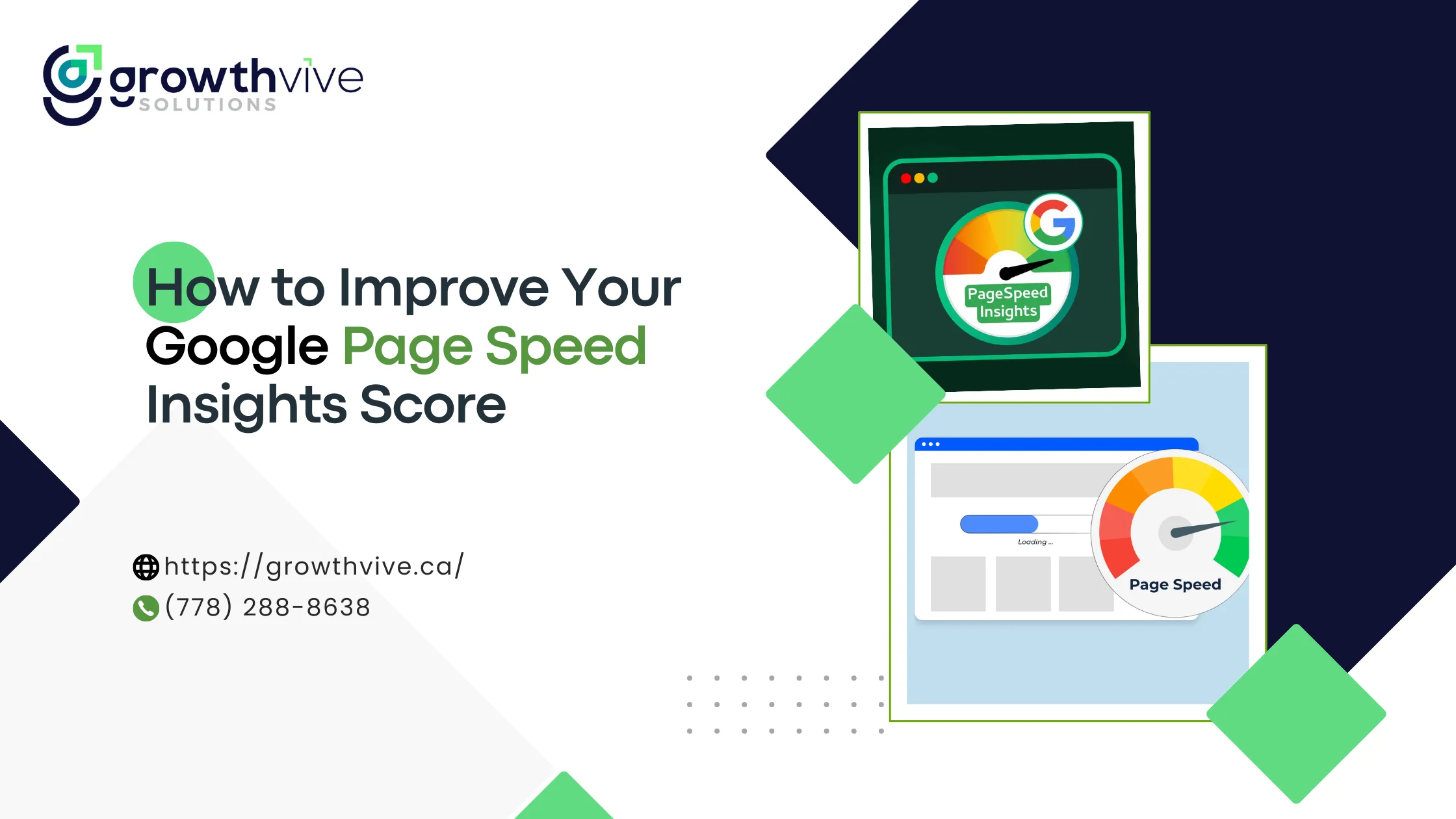In the digital world, everyone wants websites that load fast! Speed is important not just for happy visitors, but also for where your site shows up in search results. Here’s where Google PageSpeed Insights comes in handy. It’s a free tool that analyzes your website and gives you tips on how to make it fast. Let’s jump in and see how to use PageSpeed Insights to give your website a speed boost and keep your visitors smiling!
Understanding PageSpeed Insights

Understand how Google PageSpeed Insights works, before knowing about the optimization techniques. This tool evaluates your website’s speed performance on mobile and desktop. It provides a score based on various metrics.
The metrics include FCP, LCP, and CLS.
FCP: First Contentful Paint
LCP: Largest Contentful Paint
CLS: Cumulative Layout Shift
Understanding these metrics will help you analyze your Google site performance report effectively.
Introducing INP: Boost Your Web Performance with Core Web Vitals
After years of hard work, Google’s Chrome team finally made an Interaction to Next Paint (INP) a stable Core Web Vital metric. This was a big step forward in how we measure responsiveness in user interaction, fixing many issues we found with First Input Delay (FID).
In 2018, Google introduced FID (First Input Delay) as part of its Web Vitals initiative, which helps web developers improve user experience. FID calculates the time between a user’s first interaction and the first paint on the screen.
However, Google found that FID had limitations in assessing interactivity. So, in May 2022, they introduced INP (Input Next Paint) as an experimental metric and confirmed later that INP will officially replace FID.
What Led Google to Shift from First Input Delay to Interaction to Next Paint?
The old First Input Delay metric sometimes needed to catch up in spotting user dissatisfaction.
Interaction to Next Paint (INP) steps up in two ways:
- INP looks at the entire time between user interaction and the next visual update, unlike First Input Delay, which only sees a fraction of the delay.
- INP considers all page interactions and usually flags the one with the biggest delay, while First Input Delay only looks at the first interaction.
Google has updated the Core Web Vitals tools on Chrome to highlight INP’s stable status where it matters. This means tools like PageSpeed Insights, the CrUX Dashboard, and the Web Vitals extension will now prominently feature INP alongside other metrics. Specifically, PageSpeed Insights will now focus on INP performance instead of FID.
Analyzing Current Performance with PageSpeed Insights

To improve your website’s speed, you must assess its current performance. Google PageSpeed Insights is the best way to analyze Google site speed and performance.
Entering your website’s URL into the tool generates a detailed improvement report. Pay close attention to opportunities for optimization identified in the report. Some of them are image compression, JavaScript minification, and server response time.
Advanced Optimization Strategies
If your report is filled with red and yellow indicators, it signals loading issues on your page.

Now that you have a clear understanding of your website’s performance. Let’s explore some usable tips to enhance your Google Page Speed Insights score:
-
Optimize Images:
- Compress images using tools like TinyPNG or JPEG Optimizer to reduce file size.
- Use modern image formats like WebP. It offers superior compression compared to traditional formats like JPEG and PNG.
- Use responsive images to show the right size pictures. It also depends on what device and screen resolution someone is using.
-
Minimize CSS and JavaScript:
- Reduce and minify CSS and JavaScript files. It is useful to reduce the overall file size and number of HTTP requests.
- Make CSS and JavaScript files smaller by cutting down on unnecessary stuff. This helps make websites load faster.
- Consider using Content Delivery Networks (CDNs). It is helpful to distribute CSS and JavaScript files closer to your website visitors. It also improves load times.
-
Enable Compression:
- Enable GZIP compression on your web server. It compresses text-based resources like HTML, CSS, and JavaScript files.
- Adjust server settings for faster internet and better browser compatibility by compressing files.. This makes files smaller and easier to send.
- Implement Brotli compression for even greater compression ratios. It helps to faster load times, particularly for HTTPS connections.
-
Implement Lazy Loading:
- Lazy loading images, videos, and iframes can significantly improve initial page load times. It defers their loading until they are needed.
- Use JavaScript libraries or frameworks that offer built-in lazy loading functionality. It includes LazyLoad.js or Intersection Observer API.
- Prioritize above-the-fold content to ensure essential elements are loaded first. It provides users with a fast initial impression of your website.
-
Reduce Server Response Time:
- Optimize server-side performance by minimizing database queries. Optimize code execution, and leverage caching mechanisms.
- Utilize a (CDN) Content Delivery Network to distribute content across multiple servers worldwide.
- Monitor server health and performance metrics using tools like New Relic or Datadog. It is useful to identify and manage bottlenecks.
Implementing Changes
Implementing the recommended changes may seem challenging. But, with the right approach, it can be straightforward. Start by prioritizing the most impactful optimizations identified in your PageSpeed Insights report.
Utilize tools and plugins designed to streamline the optimization process. Don’t hesitate to get assistance from Google speed developers.
Monitoring and Iteration
Optimization is an ongoing process. It’s essential to monitor your website’s performance regularly. Use Google PageSpeed Insights to track changes in your Page Insights Score over time. You can also identify any areas that require further improvement. Continuously, go through your optimization efforts. It is essential to ensure your website maintains optimal speed and performance.
Conclusion:
Give your visitors a flying start! A speedy website keeps them happy and engaged, while also boosting your search engine rankings. These tips are your secret weapon for a lightning-fast site. By following them and keeping website speed a priority, you’ll create a winning experience for both users and search engines.

